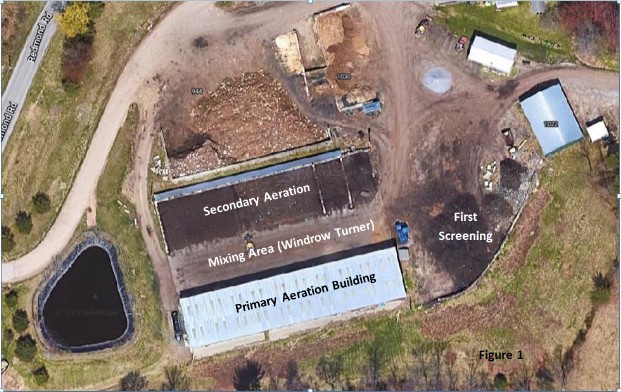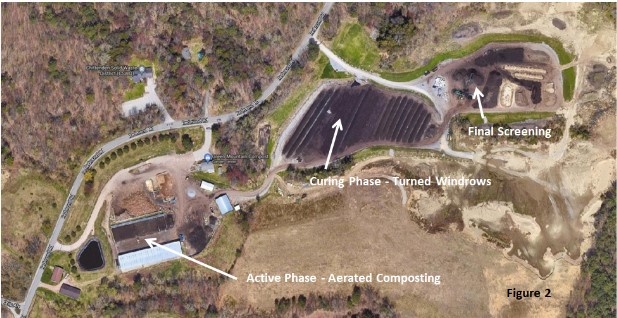We previously discussed the "KISS" Principle for small scale compost systems. This principle also applies to larger municipal scale compost facilities, as exemplified by Green Mountain Compost in Williston, Vermont.
The Green Mountain Compost facility began as "Intervale Compost Products" in 1987, located in Burlington, Vermont. The objective at that time was to help restore farmland in the area and to support the local food economy. The facility was first located on 10 acres and, over time, an increasing variety of feedstocks were brought in for composting.
Following regulatory changes in 2008, it became clear that Intervale Compost Products could no longer operate in its current location. Recognizing the importance of continuing the diversion of leaves and other organic materials from the landfill, the Chittenden Solid Waste District (CSWD) stepped in and took over operations.
In 2011, CSWD closed the doors on the Burlington site and constructed a brand new, state-of-the-art composting facility eight miles west of Williston, Vermont. In early 2012, the County launched the new Green Mountain Compost brand name to reflect the company's progress and the new facility, nestled in the foothills of the scenic Green Mountains.
Sales continued to grow as more people from Chittenden County Vermont, New England recognized the value of adding compost to gardens, lawns, and farms. As a program of CSWD, Green Mountain Compost will continue to enable schools, businesses, and households to divert an increasing volume of valuable compostable material from the landfill.
Since moving to the new site, the facility has grown significantly to accommodate the growing volumes of feedstocks and to improve operational efficiencies. Over many years, these changed included:
- Constructing the primary aeration building (Figure 1);
- Constructing a set of uncovered aeration bays directly across from the primary aeration building;
- Expanding and paving the curing area (Figure 2) and purchasing a windrow turner to expedite the curing process;
- Using the area between the primary and secondary aeration bays for mixing using the windrow turner;
- Purchasing a second screen to remove film plastic from the compost prior to curing;
- Purchasing a large capacity (off-road) dump truck to transport compost to the curing area; and
- Constructing a dedicated final screening and temporary product storage.
 |
 Figure 2 Figure 2
|
The objectives of this facility (and every compost facility) are to:
- Protect surface and ground water resources;
- Mitigate off-site impacts from odor and dust;
- Produce the highest quality compost possible, in keeping with the available feedstocks; and
- Maximize operational efficiency by Keeping It Simple and Systematic (KISS).